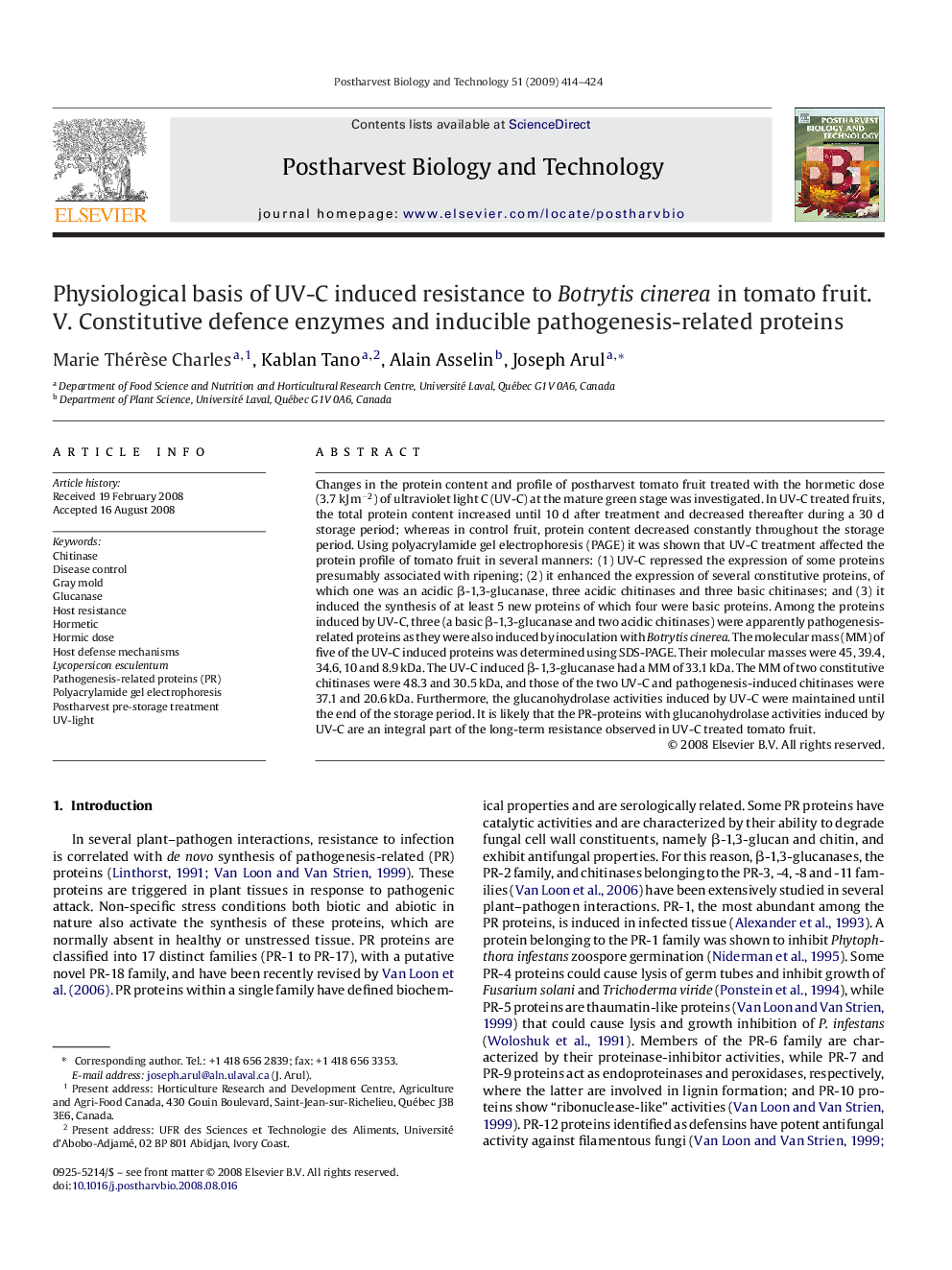| Article ID | Journal | Published Year | Pages | File Type |
|---|---|---|---|---|
| 4519233 | Postharvest Biology and Technology | 2009 | 11 Pages |
Changes in the protein content and profile of postharvest tomato fruit treated with the hormetic dose (3.7 kJ m−2) of ultraviolet light C (UV-C) at the mature green stage was investigated. In UV-C treated fruits, the total protein content increased until 10 d after treatment and decreased thereafter during a 30 d storage period; whereas in control fruit, protein content decreased constantly throughout the storage period. Using polyacrylamide gel electrophoresis (PAGE) it was shown that UV-C treatment affected the protein profile of tomato fruit in several manners: (1) UV-C repressed the expression of some proteins presumably associated with ripening; (2) it enhanced the expression of several constitutive proteins, of which one was an acidic β-1,3-glucanase, three acidic chitinases and three basic chitinases; and (3) it induced the synthesis of at least 5 new proteins of which four were basic proteins. Among the proteins induced by UV-C, three (a basic β-1,3-glucanase and two acidic chitinases) were apparently pathogenesis-related proteins as they were also induced by inoculation with Botrytiscinerea. The molecular mass (MM) of five of the UV-C induced proteins was determined using SDS-PAGE. Their molecular masses were 45, 39.4, 34.6, 10 and 8.9 kDa. The UV-C induced β-1,3-glucanase had a MM of 33.1 kDa. The MM of two constitutive chitinases were 48.3 and 30.5 kDa, and those of the two UV-C and pathogenesis-induced chitinases were 37.1 and 20.6 kDa. Furthermore, the glucanohydrolase activities induced by UV-C were maintained until the end of the storage period. It is likely that the PR-proteins with glucanohydrolase activities induced by UV-C are an integral part of the long-term resistance observed in UV-C treated tomato fruit.
